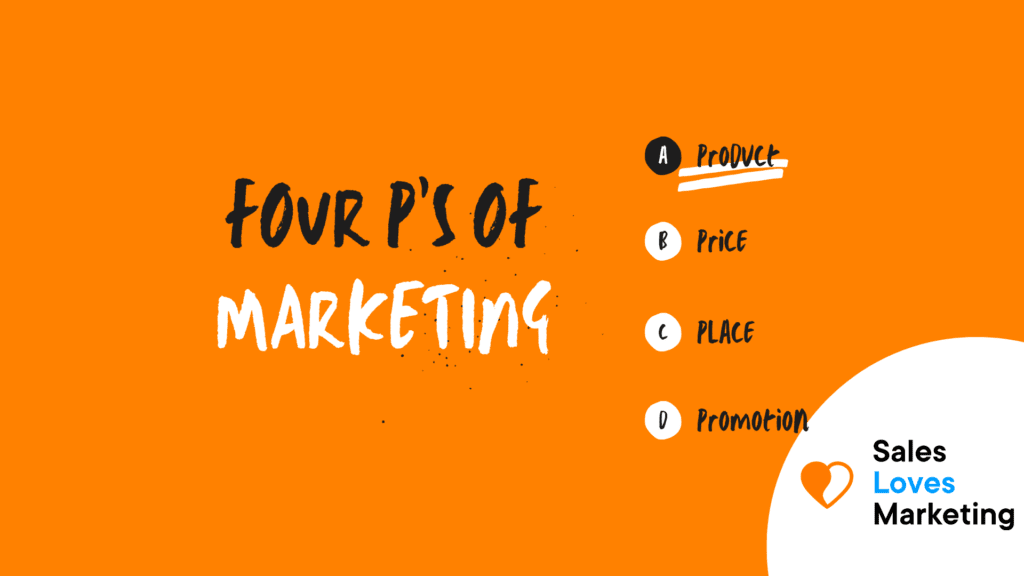What are the 4 P’s of Marketing?
The four P’s of marketing are the essential factors that marketing masters should focus on to establish successful tactics that help achieve determined goals. The four P’s of marketing stand for: product (or service), price (what the consumer pays), promotion (the advertising), and place (the demographic).
How do the 4 P’s of Marketing work?
The concept of the four P’s has been present in the marketing world for a really long time, so with the arrival of the Internet, this concept has been extended and modified to help achieve a greater understanding between business and customers; this is why it is important to understand that any successful strategy needs to be rechecked over time.
Product.
As its name says, the product refers to the good or service being offered to the public. The ideal product’s main goal should be fulfilling an existing need in the customer’s life or being so well designed that customers think they need it, and so it creates new demand. The product is directly related to the other three P’s of marketing, and it can be considered the main one.
Price.
The price is the cost that is charged to the customers for said product, and even though companies must consider the supplies cost and the manufacture, they should also think about external factors such as perceived value, competitor’s price, and seasonal discounts.
Promotion.
The promotion is everything that goes into advertising said product, and this can go from public relationships to promotional strategies. The purpose of promoting a product is to reach out to possible customers and showing them the reasons why they would need or want to buy the service offered, and of course, prove that the price is worth it.
Place.
The place a product is put on determines the kind of public the service is shown to and the response the marketers will get from them. When placing the product, the main goal is to direct it in the right way to the ideal demographic, so the customers are more likely to buy it; the place of a product is directly related to its promotion.
How to use the 4P’s of Marketing?
It is pretty easy to understand how the four P’s model works, but the real question is: how to apply each of these concepts in a real online marketing strategy? Here are the most important tips for doing so:
- Analyze the product.
Studying in-depth the kind of product, its public, how it works, and even its price is the first step to developing a successful strategy. It should be applied separately to individual products, even if they are from the same company or for the same demographic.
- Adding other P’s.
As said above, this scheme was first developed for regular marketing, so it may not adjust perfectly to the marketing strategy of a company when it comes to online marketing. If this is the case, the marketer should not be afraid to modify, and this can be done through adding new focuses; common ones are physical evidence, that refers to showing proof that the service was performed or that the product was delivered, people, which rather than focusing on the customers it does on the employees and processes, that are the ways the company makes sure that the service is provided in the best way possible.
- Recheck the strategies over time.
A well-applied marketing strategy requires to be checked on regularly, as the market changes and the products grow in it, the price, place, and promotion are changing, and with this the public, so these aspects should be reevaluated to make sure that a service is being presented in its best way possible to possible buyers.
Examples of the 4P’s of Marketing.
- Product.
The product or service that a business presents can significantly change from the kind of company that it belongs to, so the examples are limitless; some can be different plates served by a restaurant or technical help provided by a software specialist.
- Price.
The price is the cost put on the product, and this as well will drastically vary depending on the product’s value.
- Promotion.
Nowadays, there are many ways to advertise a product, and it can go from regular marketing to digital marketing; a company might create a campaign on a social platform to reach its audience while a restaurant could be presented in TV commercials.
- Place.
The place of a product can be interpreted in two similar ways: where it is presented, such as the store or market a cleaning product can be found in, and the public it is presented to, like a toy being intended for a kid in a determined age range.
